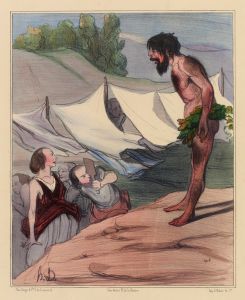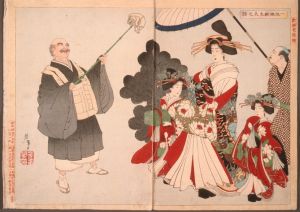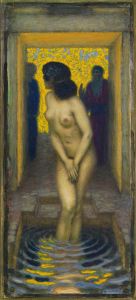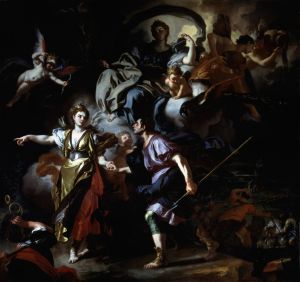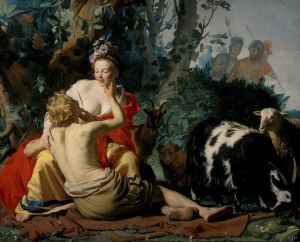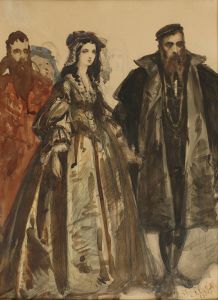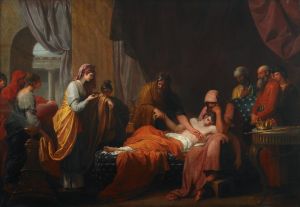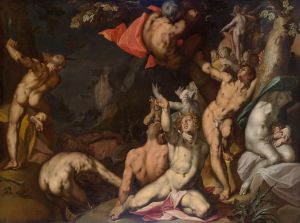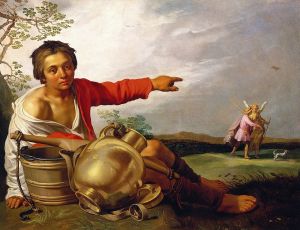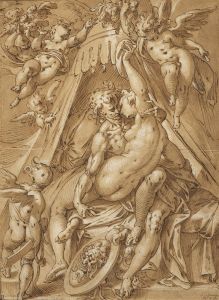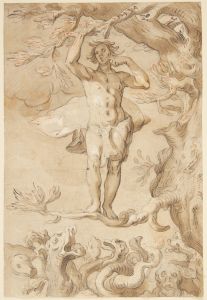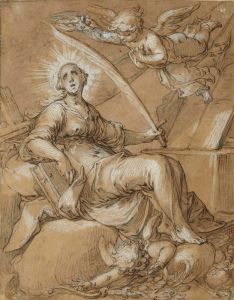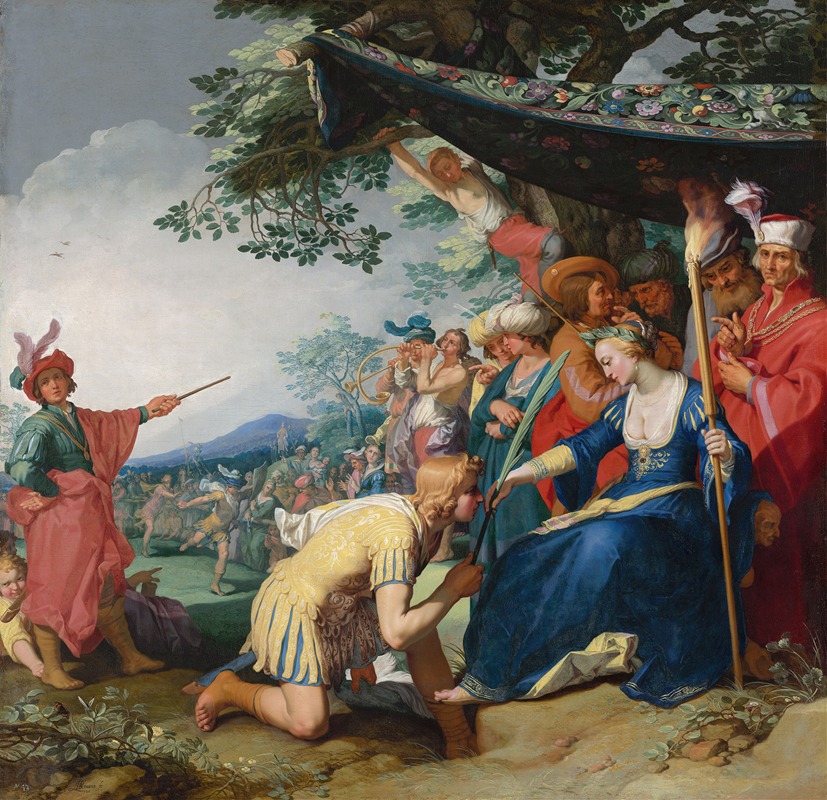
Theagenes Receiving The Palm of Honour From Chariclea
A hand-painted replica of Abraham Bloemaert’s masterpiece Theagenes Receiving The Palm of Honour From Chariclea, meticulously crafted by professional artists to capture the true essence of the original. Each piece is created with museum-quality canvas and rare mineral pigments, carefully painted by experienced artists with delicate brushstrokes and rich, layered colors to perfectly recreate the texture of the original artwork. Unlike machine-printed reproductions, this hand-painted version brings the painting to life, infused with the artist’s emotions and skill in every stroke. Whether for personal collection or home decoration, it instantly elevates the artistic atmosphere of any space.
"Theagenes Receiving The Palm of Honour From Chariclea" is a painting by the Dutch artist Abraham Bloemaert. Bloemaert, born in 1566 and died in 1651, was a prominent figure in the Dutch Golden Age of painting. He was known for his versatility in various styles and subjects, ranging from history paintings to landscapes and genre scenes.
This particular painting, "Theagenes Receiving The Palm of Honour From Chariclea," is based on a scene from the ancient Greek novel "Aethiopica" by Heliodorus of Emesa. The novel, written in the 3rd century AD, tells the story of the lovers Theagenes and Chariclea, who undergo numerous trials and adventures before ultimately being united.
In the painting, Bloemaert captures the moment when Chariclea, the heroine, presents a palm of honor to Theagenes, the hero. The palm is a symbol of victory and honor, often associated with triumph and achievement in classical literature and art. This scene is significant in the narrative as it highlights the bond and mutual respect between the two protagonists.
Bloemaert's work is characterized by its detailed composition and the use of vibrant colors, which were typical of his style. The painting showcases his skill in rendering human figures with expressive gestures and emotions. The use of light and shadow in the painting adds depth and drama to the scene, emphasizing the importance of the moment being depicted.
Abraham Bloemaert was a key figure in the Utrecht School, a group of artists in the Dutch city of Utrecht who were influenced by Caravaggio's dramatic use of light and shadow. Bloemaert's work, including "Theagenes Receiving The Palm of Honour From Chariclea," reflects this influence, although he also maintained his unique approach to composition and color.
Throughout his career, Bloemaert trained many pupils who went on to become notable artists in their own right. His influence extended beyond his own works, contributing to the development of Dutch art in the 17th century. Some of his most famous students include Gerrit van Honthorst, Hendrick Terbrugghen, and Jan Both.
"Theagenes Receiving The Palm of Honour From Chariclea" is an example of Bloemaert's ability to blend classical themes with his own artistic style, creating works that are both historically significant and visually compelling. The painting is part of the collection of the Rijksmuseum in Amsterdam, where it continues to be appreciated by art enthusiasts and scholars alike.
In summary, Abraham Bloemaert's "Theagenes Receiving The Palm of Honour From Chariclea" is a notable work that exemplifies the artist's skill in depicting classical themes with emotional depth and technical proficiency. The painting remains an important piece within the context of Dutch Golden Age art and Bloemaert's own artistic legacy.





